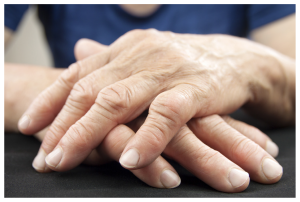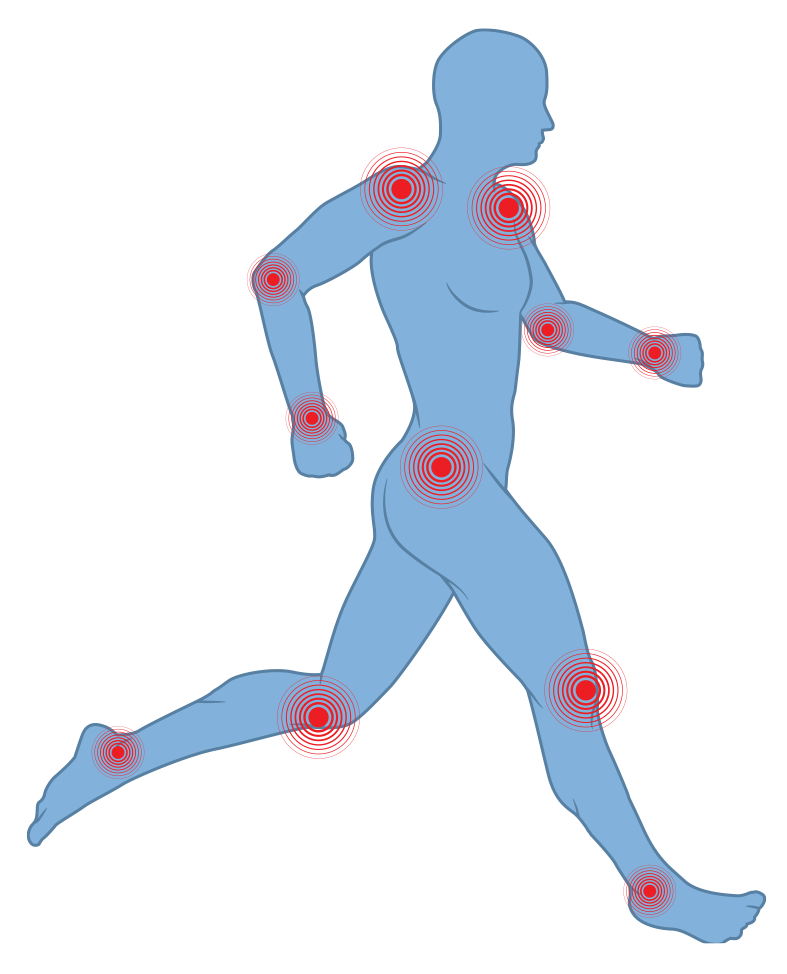ARTHRITIS: RESTORING FUNCTION
INFOMEDICA’S BOTTOM LINE:
If your patients deal with arthritis and joint pain, you don’t need to use potentially harmful over-the-counter and prescription drugs. Powerful, natural ingredients are just as effective without the risk.
A combination of boswellia, curcumin enhanced with turmeric essential oil, and devil’s claw can fight inflammation, reduce pain, preserve joint function, and help your patients stay active. Together, these ingredients:
- Stop arthritis fast
- Optimize joint comfort
- Restore flexibility and mobility
- Lubricate joints
- Reduce 5-LOX and COX-2 activity
- Fight inflammation throughout the body
- Provide proven, safe relief to keep active
Osteoarthritis is the most common of all joint diseases. According to the Centers for Disease Control (CDC), it affects approximately 30 million adults in America.
Potentially dangerous prescription drugs may seem like an attractive option for your patients. But there are three natural medicines that have been extensively researched to relieve pain and keep knees, spine, and joints throughout the body working smoothly—safely and effectively.

The Course of Osteoarthritis
As osteoarthritis progresses, cartilage deteriorates and over time, distorts the surface of bones as the space between them narrows. The resulting friction and damage creates more inflammation, which not only causes the red flag of pain for your patients, but ultimately worsens the problem. As it is common for more than one area of the body to be affected at the same time, osteoarthritis can feel inescapable. And since the risk of osteoarthritis increases with age, it is expected to become even more prevalent as the population of the United States grows older.
Is Glucosamine Sulfate the Only Alternative?
One common natural intervention for osteoarthritis is glucosamine sulfate (GS).
Because of the lengthy time that GS has been on the market, with better than fair results for joint support, it has gained a wide reputation for joint health with many doctors suggesting its use for their elderly patients.
The clinical reports on GS indicate that about 40 percent of individuals placed on GS will experience benefits after about three months. So it may be an option for your patients. Additionally, there are herbal ingredients that may be even more effective.
Herbs to Ease Arthritis
The first herb, boswellia (Boswellia serrata) is from India and has been used in Ayurvedic medicine for thousands of years. Aside from stopping osteoarthritis and joint pain, boswellia is a powerful inflammation fighter, and is well-researched for reducing respiratory and digestive disease symptoms, and stopping cancer cell growth. One of the most unique characteristics of boswellia is that it is one of the few herbs that inhibits 5-LOX (5-lipoxygenase) inflammation.
One form of boswellia that has performed well in research is an extract standardized to have reduced levels of beta-boswellic acids, which can be inflammatory, and provides at least 10 percent of acetyl-11-keto-beta-boswellic acid (AKBA).
In fact, this is the form that was used in the clinical study of osteoarthritis with curcumin—another herb recommended to stop the pain and joint damage of arthritis.
Curcumin is one of the primary compounds from turmeric (Curcuma longa), and is one of the world’s most valuable natural disease fighters. It fights inflammation throughout the body, and has been used in leading clinical studies on depression, Alzheimer’s, rheumatoid arthritis, and many other conditions.
However, like boswellia, curcumin needs to be chosen with care. The best form is enhanced with turmeric essential oil, which boosts the compound’s absorption and blood retention, and delivers ar-turmerone, an anti-inflammatory inherent in the oil.
Effective for Osteoarthritis
A published human study compared a combination of these forms of boswellia and curcumin to the generic drug celecoxib (one brand name is Celebrex).
In this study, group one received celecoxib (100 mg) twice daily, while the second group received a 500 mg blend of the boswellia and curcumin combination twice daily. For pain relief, 64 percent of those taking the herbal ingredients versus 29 percent in the drug group improved to such a high degree that they were able to move from having “moderate to severe arthritis” to “mild to moderate arthritis.”
Aside from osteoarthritis, boswellia could be very useful for relieving rheumatoid arthritis. That’s because, of the two, rheumatoid arthritis typically presents with greater levels of 5-LOX inflammation. Plus, boswellia and curcumin aren’t going to cause the side effects and complications of prescription and over-the-counter drugs often used to battle arthritis. Additionally, these herbs stop inflammatory joint damage—so they aren’t just stopping pain, they’re stopping the causes of the pain and preserving joints and mobility at the same time.

Joint Relief and Mobility
Another botanical, devil’s claw (Harpagophytum procumbens and Harpagophytum zeyheri), is a must for restoring joints and improving flexibility. This herb has been used for centuries by the indigenous people of South Africa, treating pain with the dried roots of the plant. These days, scientific research is beginning to understand why it works so well.
In a clinical study published in the journal Phytomedicine, devil’s claw relieved hip pain by 54 percent and knee pain by 38 percent in eight weeks. In another German clinical study, devil’s claw was equal in pain-relieving ability to rofecoxib, (Vioxx) a prescription non-steroidal anti-inflammatory drug (NSAID) ultimately pulled from the market because of its potentially lethal side effects. One of devil’s claw’s key compounds, harpagosides, can reduce COX-2 activity by 31 percent, which is one reason for its effectiveness in reducing inflammation.
Aside from fighting inflammation, devil’s claw can help preserve the cushioning cartilage of the joints. A standardized devil’s claw extract with 20 percent harpagosides was shown to increase the level of glycosaminoglycans (GAGs) by 38 percent. This same devil’s claw extract also boosted the synthesis of hyaluronic acid by 41 percent. This herb reduces the potential for “bone-on-bone” pain because it helps keep that cushioning cartilage healthy.
Three Botanicals for Arthritis and Joints
The pain and stiffness of arthritis is difficult to live with, and the prescription drugs so often used to treat it can create devastating complications. The combination of these botanicals has great potential to relieve the pain your patients are facing and help rebuild the cushioning structure of the joints and vertebrae — without risks and side effects.
For more information on this topic, watch the following video: Curcumin + Turmerones for Cancer, Pain, Arthritis, Depression, Diabetes, Parkinson’s & More


